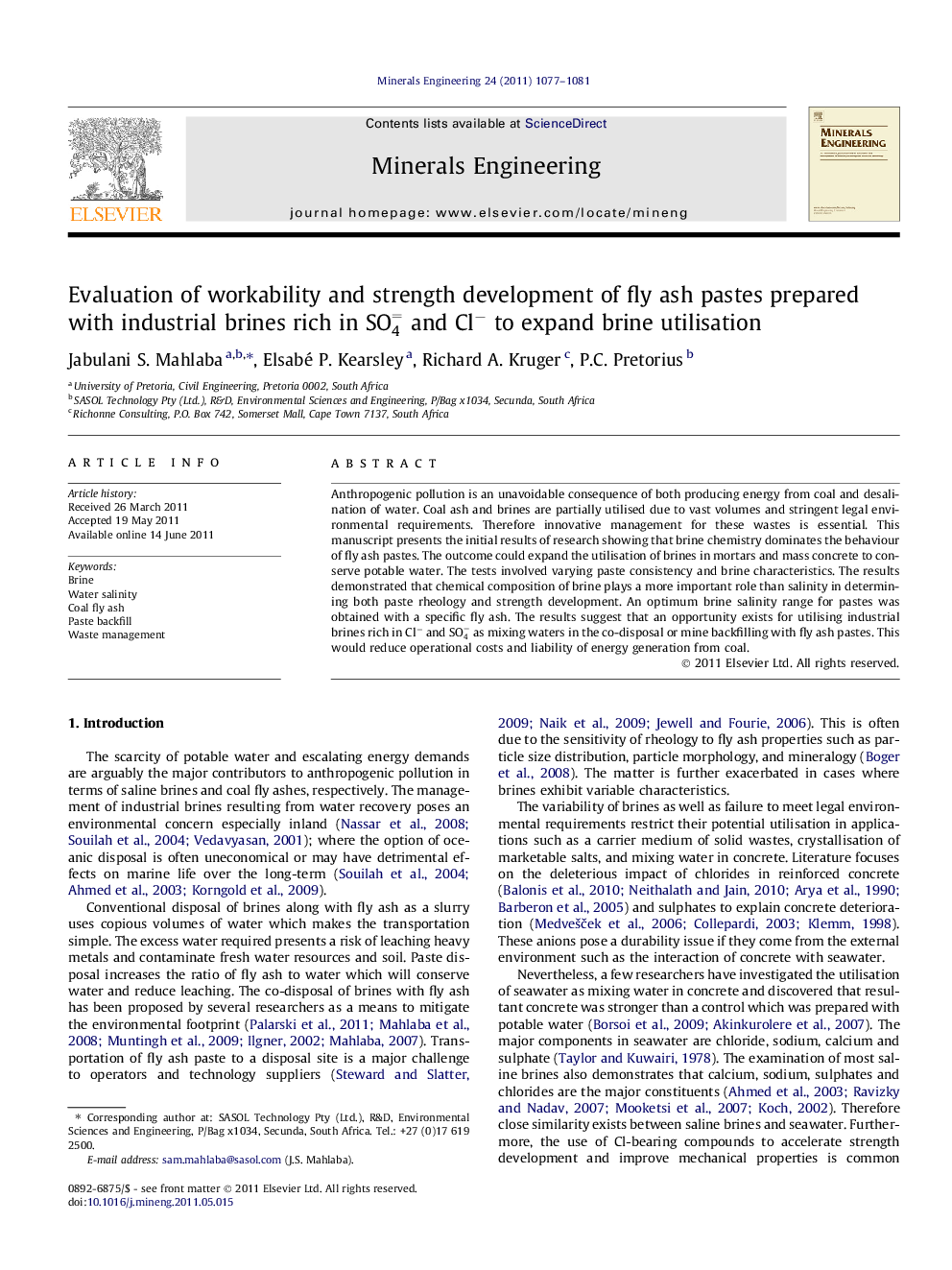| Article ID | Journal | Published Year | Pages | File Type |
|---|---|---|---|---|
| 233939 | Minerals Engineering | 2011 | 5 Pages |
Anthropogenic pollution is an unavoidable consequence of both producing energy from coal and desalination of water. Coal ash and brines are partially utilised due to vast volumes and stringent legal environmental requirements. Therefore innovative management for these wastes is essential. This manuscript presents the initial results of research showing that brine chemistry dominates the behaviour of fly ash pastes. The outcome could expand the utilisation of brines in mortars and mass concrete to conserve potable water. The tests involved varying paste consistency and brine characteristics. The results demonstrated that chemical composition of brine plays a more important role than salinity in determining both paste rheology and strength development. An optimum brine salinity range for pastes was obtained with a specific fly ash. The results suggest that an opportunity exists for utilising industrial brines rich in Cl− and SO4= as mixing waters in the co-disposal or mine backfilling with fly ash pastes. This would reduce operational costs and liability of energy generation from coal.
Graphical abstractIllustration of workability of pastes as a function of brine chemistry and determination of compressive strength of cured paste.Figure optionsDownload full-size imageDownload as PowerPoint slideHighlights► The manuscript presents results of a novel application of fly ash and brines for backfilling. ► Chemical composition and salinity of industrial brines profoundly influence the behaviour of fly ash pastes. ► The use of brines as mixing water presents both transportation and strength development benefits and mining efficiency. ► Use of brines conserve water resources and also improve the economics of coal mining and processing.
